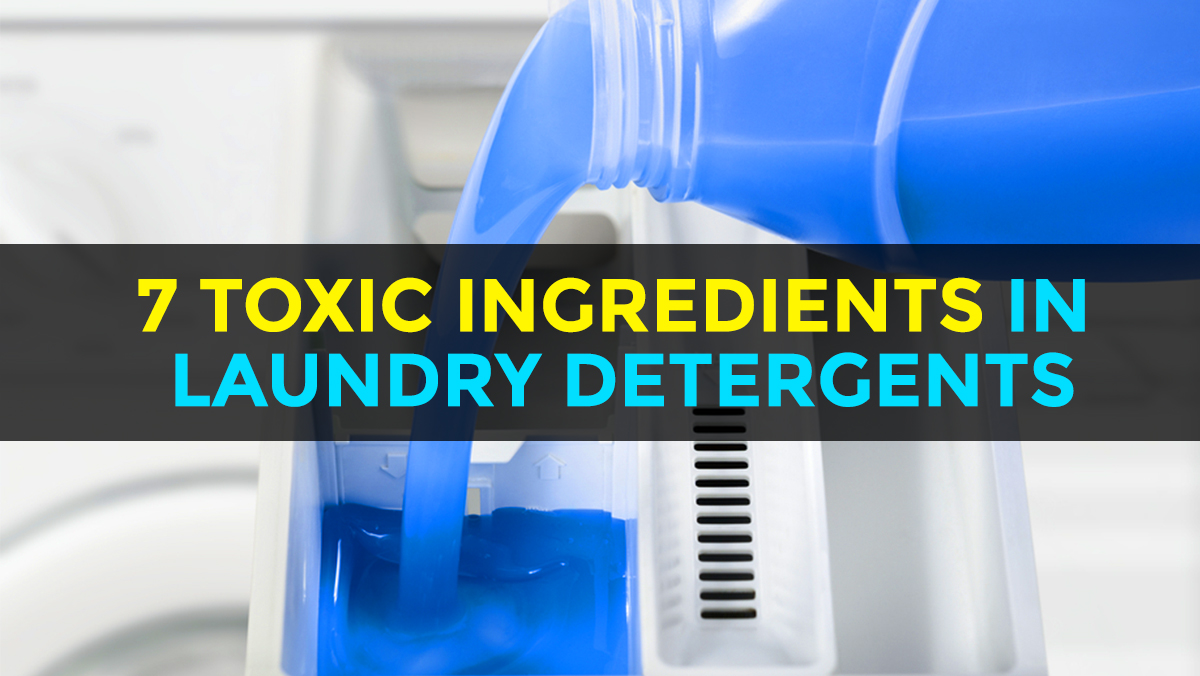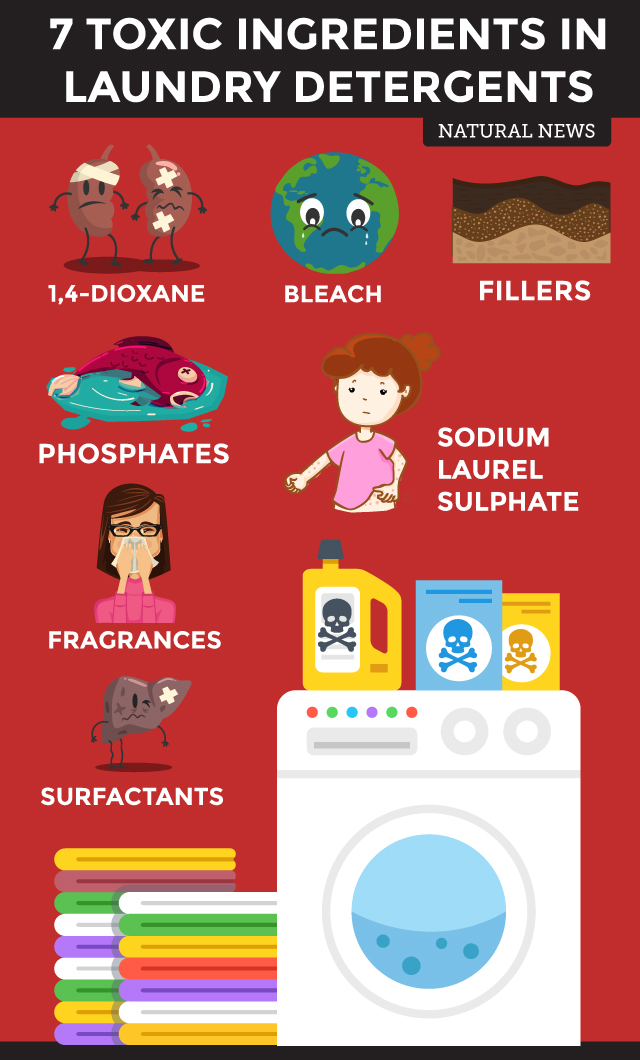Seven dangerous ingredients found in laundry detergents that could be harming you and the environment
08/17/2017 / By Kristine Payne

Laundry detergents are some of the most common and widely-used household products today. We need these to clean our clothes, and there are dozens of readily available brands in groceries and supermarkets. But despite their importance in our daily lives, laundry detergents are hurting us more than we realize. What gets put into these products can enter our bodies and even our environment. With that in mind, here are some dangerous chemicals that could be in your home’s supply of laundry detergent:
- 1,4-dioxane – Also known as diethylene oxide, 1,4-dioxane is a byproduct of the process used to create sudsier and softer laundry detergents. Because it’s a byproduct, 1,4-dioxane usually isn’t included on the ingredients list. Short-term exposure to low levels of 1,4-dioxane can bring about nose and eye irritation, while high levels of this chemical can cause severe liver and kidney damage.
- Bleach – Often added to make laundry detergents more effective at removing stains, bleach can actually damage clothes by causing colors to fade and fibers to deteriorate. Bleach is known for being a highly toxic household product, especially when combined with other cleaners and organic materials. When bleach mixes with organic materials in the environment, the result is chlorinated volatile organic compounds (VOCs) that are believed to be human carcinogens.
- Fillers – Just liketheir name implies, these are bulking agents that serve no purpose beyond adding volume to laundry detergents. Fillers can induce allergic reactions, form an oxygen-blocking layer over soil, and erode washing machine parts.
- Fragrances – The word “fragrances” refers to any number of chemicals that give a product a certain aroma. Fragrances don’t do much outside of making laundry detergent smell nice. In fact, some materials used in fragrance compounds can cause health problems, the least worrying of which are allergic reactions and sensitivities.
- Phosphates – Manufacturers will add phosphates to laundry detergents to increase their efficacy in hard water or water with a high mineral content. When phosphates enter aquatic ecosystems, these chemicals can throw them off balance by promoting rapid algae growth. Too much algae will deplete oxygen quickly, suffocating the animals living in that affected body of water.
- Sodium laurel sulphate – Like many other toxic laundry detergent ingredients, sodium laurel sulphate (SLS) is a skin irritant. It does little besides making laundry detergent foam and isn’t necessary for clean clothes.
- Surfactants – These ingredients are also known as cleaning agents, and are included in laundry detergents to boost their cleaning capabilities. Besides their numerous detrimental health effects on people – which run the gamut from allergies to liver damage to compromised endocrine systems — surfactants can do a number on the environment as well. When surfactants come into contact with freshwater fish, they break down the protective coating that keeps parasites and bacteria at bay. A couple of known surfactants include linear alkyl benzene sulfonates (LAS) and nonylphenol ethoxylates (NPE).
100% organic essential oil sets now available for your home and personal care, including Rosemary, Oregano, Eucalyptus, Tea Tree, Clary Sage and more, all 100% organic and laboratory tested for safety. A multitude of uses, from stress reduction to topical first aid. See the complete listing here, and help support this news site.

Knowing all this, you might be looking at some good alternatives to commercial laundry detergents. One option is to create your own homemade natural laundry detergent – something that is relatively easy to do. According to ThankYourBody.com, you would need:
- One five-ounce bar of finely-grated castile soap
- One cup washing soda
- One-half cup baking soda
- One-half cup citric acid
- One-fourth cup coarse sea salt
- Optional: One dessicant
Simply mix the ingredients together then store them in an airtight container. You can include a desiccant in the container to prevent your detergent from clumping. To use, add one to two tablespoons to each load of laundry.
If you’re not much of a do-it-yourselfer, you can also buy green or natural laundry detergents such as Health Ranger Select Laundry Detergent Powder. This laundry product is safe for you and for the environment because it’s formulated with all-natural, gentle ingredients. Every box can last you up to 150 loads, so you get green and cost-effective laundry detergent that only cleans clothes. No allergic reactions or oxygen depletion. Just safe and efficient cleaning for you and your family.
Sources include:
Tagged Under: environmentally safe, household products, ingredients, laundry detergent, laundry detergent ingredients, laundry products, toxic chemicals, toxins




















